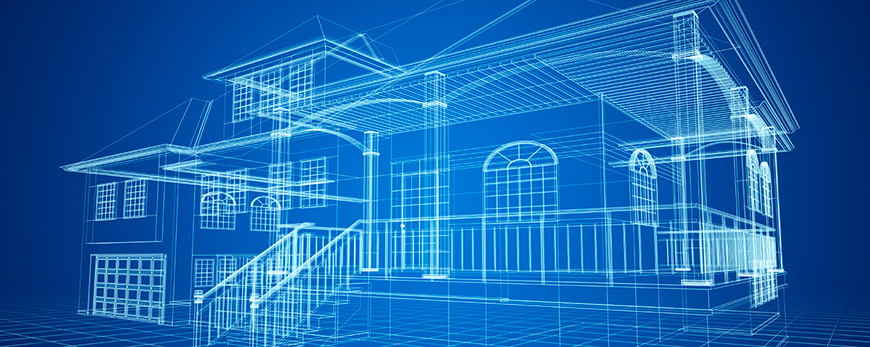How CDA Architects Supply Cutting-Edge Solutions for Sustainable Architecture
How CDA Architects Supply Cutting-Edge Solutions for Sustainable Architecture
Blog Article
The Impact of Technical Developments on the Design Practices of Contemporary Architects
The quick advancement of technological devices has actually dramatically improved the style landscape for modern designers, cultivating extraordinary degrees of technology and sustainability. Discovering these characteristics discloses a nuanced interaction in between innovation and standard style methods, prompting a better evaluation of what the future holds for architectural practices.
Advancement of Architectural Devices
Exactly how have building tools changed the style and construction processes over the centuries? The development of building tools has actually substantially impacted the performance, accuracy, and creative thinking of style and building and construction.
With the introduction of the Renaissance, the intro of the compass and the protractor marked an essential shift. These devices enabled designers to attain greater accuracy in their layouts, facilitating the introduction of more complex and proportional buildings. The Industrial Transformation better revolutionized architectural exercise with the introduction of mechanized devices and products, permitting larger and much more ambitious jobs.
In the 20th century, the advancement of computer-aided design (CAD) software transformed the landscape once more, providing designers with unmatched abilities in modeling and visualization. Today, advanced devices such as Structure Details Modeling (BIM) and parametric layout software continue to push the boundaries of building development, making it possible for an extra incorporated strategy to layout and building and construction procedures.
Improved Partnership in Style
As innovation remains to develop, enhanced collaboration in design has come to be a cornerstone of modern-day building method. The combination of digital tools such as Building Details Modeling (BIM), cloud-based systems, and advanced visualization software has changed the means designers, engineers, and stakeholders communicate throughout the design procedure. These devices help with real-time communication, permitting groups to share ideas, adjustments, and comments instantly, no matter of geographical place.

In addition, interdisciplinary cooperation has actually been streamlined through these technological innovations, enabling engineers to work a lot more very closely with various other experts, such as city planners and environmental consultants. The result is a more cohesive method to make that thinks about different point of views and expertise. Ultimately, enhanced collaboration in design is not just a pattern; it is necessary for developing ingenious, practical, and aesthetically pleasing architecture in an increasingly complex globe.
Sustainability With Technology
Sustainability in style has progressively become linked with technological advancement, driving the market toward eco responsible practices - cda architects. Contemporary engineers are leveraging sophisticated technologies to decrease environmental effect while enhancing the efficiency of structures. One popular example is making use of Structure Info Modeling (BIM), which permits exact planning and resource allowance, reducing waste during building and construction and promoting power efficiency throughout a structure's lifecycle
Moreover, clever materials and energy-efficient systems are being integrated into layouts to maximize source use. Technologies such as photovoltaic or pv cells and eco-friendly roof systems harness renewable resource sources, adding to reduced carbon footprints. Furthermore, the application of expert system in design procedures makes it possible for architects to replicate and examine energy intake, assisting choices towards even more lasting results.
The integration Website of sustainable innovations not only aligns with global environmental goals but additionally meets a boosting demand from customers for eco-friendly services. As architects embrace these developments, the emphasis shifts towards producing spaces that are not just cosmetically pleasing but likewise functionally sustainable, thus redefining the standards of modern design. In this method, innovation offers as a stimulant for sustainability, allowing architects to design structures that respect and improve the natural surroundings.
Obstacles in Execution
While technological developments in architecture hold great promise for enhancing sustainability, their execution usually comes across significant obstacles - cda architects. One main obstacle is the high knowing curve related to brand-new modern technologies. Designers and building specialists may call for substantial training to effectively make use of sophisticated software program and tools, which can postpone project timelines and boost costs
Furthermore, the assimilation of arising technologies, such as Structure Details Modeling (BIM) and sustainable products, frequently requires cooperation across multidisciplinary teams. This article collaboration can be hindered by differences in expertise, operations, and interaction designs, resulting in prospective conflicts and inadequacies.
Financial constraints even more make complex the fostering of cutting-edge technologies. Numerous building firms, especially smaller sized ones, might lack the resources to invest in innovative devices, restricting their capacity to take on bigger companies that can manage such investments.
Furthermore, regulative frameworks and building codes may not equal technological developments, producing uncertainty and prospective compliance issues. This challenge can discourage architects from completely welcoming brand-new innovations, as the danger of non-compliance may exceed the benefits. For that reason, dealing with these application difficulties is important for the successful integration of technical innovations in modern architectural practices.
Future Patterns in Architecture
The obstacles connected with the implementation of brand-new innovations in architecture have actually triggered a reevaluation of future trends within the sector. As engineers browse concerns such as sustainability, urbanization, and social equity, they are progressively taking on innovative modern technologies to enhance style efficiency and ecological performance.
One noticeable pattern is the integration of expert system (AI) in the design process. AI devices can evaluate vast datasets to notify layout decisions, improving both creativity and performance. In A Similar Way, Building Details Modeling (BIM) continues to progress, enabling real-time partnership amongst stakeholders and helping with structured Recommended Reading task management.
Sustainable design methods are additionally gaining momentum, with engineers focusing on flexible reuse and regenerative layout concepts that minimize resource usage and waste. The consolidation of clever products and sustainable power resources will even more improve the durability of structures when faced with environment adjustment.

Verdict
Technical advancements have substantially improved building layout techniques, helping with enhanced accuracy, partnership, and sustainability. The assimilation of devices such as Building Info Modeling and parametric style software, alongside man-made intelligence and wise materials, empowers designers to deal with complicated difficulties much more properly.
Report this page